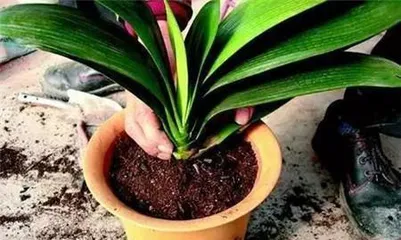Large potted plants are very beautiful, but during their long growth process, the soil can easily become loose, porous, and lacking in nutrients. When we find that large potted plants are growing slowly, turning yellow, or are prone to falling over, it is necessary to repot and change the soil to meet their growth needs. This article will introduce how to correctly repot and change the soil for large potted plants, allowing your plants to grow healthily and vigorously.

Understand the growth status of large potted plants.
When we want to change the soil for a large potted plant, we must first understand its growth status. Different types of large potted plants have different environmental and care requirements during their growth process. Before changing the soil, it is very important to understand the growth environment and care methods of the large potted plant. You can understand its growth status from aspects such as the plant's variety, growth environment, and growth habits.
Why is repotting and changing soil necessary?
During the growth process of large potted plants, the nutrients and water in the soil are gradually absorbed, and the soil also becomes loose, porous, and lacking in nutrients, which will affect the growth of the plants. When we find that large potted plants are growing slowly, their leaves are turning yellow, or they are prone to falling over, it is necessary to perform appropriate repotting and soil change to create a healthier growing environment.

The best time for repotting and changing soil.
The best time to repot and change soil is before the large potted plant enters its growing season. Generally, spring or autumn is the best time for repotting and soil change, as this is a transitional period for the plant's growth, and the new soil can better provide it with nutrients.
Prepare tools and materials for repotting.
Before repotting, some basic tools and materials need to be prepared. For example: a new pot, new soil, water, scissors, gloves, sandpaper, etc. These tools and materials will be used for replacing the pot and the soil.
Clean the old soil.
Before replacing the new soil, the old soil needs to be cleaned first. You can gently clean the soil and the pot with your hands or sandpaper to ensure that no debris or humus remains. This will ensure that the growing environment for the large potted plant is cleaner after the new soil is added.

Choose new soil.
Choosing the right new soil is also very important. Different varieties of large potted plants require different types of soil. You should choose suitable new soil based on the plant's growth status, environment, and care requirements. Generally, the new soil should have good air permeability and water retention, and be rich in nutrients.
Replace the pot.
Replacing the pot requires care and caution. First, remove the old soil, then take the plant out of the old pot, and gently remove old roots and dead leaves. Then, place the plant in the new pot, add new soil evenly, and gently pat it down with your hands.
Arrange the roots.
After repotting, the roots also need to be arranged. Trim the roots slightly to help them better absorb nutrients and water. When arranging the roots, be careful not to cut off roots that are too long or too thick.
Add nutrients.
After repotting, you can add some appropriate nutrients to the large potted plant. Nutrients can provide more nutrients for the plant, making it grow healthier.
Water and maintain moisture.
After repotting, it is essential to keep the soil moist. Large potted plants need sufficient water to grow healthily. After repotting and changing the soil, water it in a timely manner to maintain moisture.
Avoid direct sunlight and cold weather.
After repotting, large potted plants need appropriate light and temperature. You should avoid excessive sunlight and cold weather to prevent affecting their healthy growth.
Pay attention to fertilization.
Proper fertilization is also key to the healthy growth of large potted plants. Generally, you can fertilize the large potted plant appropriately every month to ensure it has a sufficient supply of nutrients.
Prune branches and leaves in a timely manner.
After repotting, the growth environment and nutrient supply of the large potted plant have improved, and its growth rate will also accelerate. Timely pruning of branches and leaves is particularly important. Regular pruning can ensure the plant's shape is beautiful and also promote its healthy growth.
Pay attention to pest control.
During the growth process, large potted plants are often infested by pests. After repotting and changing the soil, you also need to pay attention to pest control. You can regularly use pesticides and other measures to prevent and eliminate pests.
.
Repotting and changing soil is an important part of caring for large potted plants. The correct method of repotting and changing soil can ensure the healthy growth of large potted plants and make them a beautiful sight in your home. I hope this article can be helpful to everyone, let's take care of our large potted plants together!